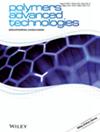Review on electrospray nanoparticles for drug delivery: Exploring applications
IF 3.1
4区 工程技术
Q2 POLYMER SCIENCE
引用次数: 0
Abstract
Electrospraying has emerged as a versatile technique in the pharmaceutical field due to its potential in drug delivery and formulation. With its advantages of cost‐effectiveness, reproducibility, ease of operation, and scalability, electrospraying offers numerous benefits for pharmaceutical applications. Notably, the production of nanoparticles using electrospraying provides unique properties, including small size, drug encapsulation capabilities, biocompatibility, and scalability. Electrospray nanoparticles have demonstrated significant promise in various drug delivery routes, such as oral and topical administration. These nanoparticles enhance drug stability, protection, and permeability, effectively overcoming limitations associated with these routes. Moreover, electrospray nanoparticles have proven valuable in targeted drug delivery, improving drug bioavailability and efficacy. Their ability to penetrate tissues and cells enables enhanced drug delivery to specific sites within the body. Additionally, electrospray nanoparticles can be tailored with targeting ligands or responsive components for controlled release and combination therapy, exhibiting successful applications in cancer treatment and neurological disorders. Therefore, electrospray nanoparticle technology shows great promise in biomedical applications, offering a versatile platform for targeted drug delivery and therapeutic interventions. This comprehensive review examines the various drug delivery applications of electrospraying and provides insights into its possibilities and challenges. The paper discusses the principles, methods, and parameters of electrospraying, while also exploring its use in fabricating drug delivery systems, addressing poorly soluble drugs. By synthesizing the findings from multiple studies, this review offers a comprehensive understanding of electrospraying's current state and potential in the pharmaceutical industry.电喷雾纳米颗粒给药综述:探索应用
电喷雾技术因其在药物输送和配制方面的潜力,已成为制药领域的一种多功能技术。电喷雾技术具有成本效益高、可重复性好、操作简便和可扩展性强等优点,为制药应用带来了诸多益处。值得注意的是,利用电喷雾技术生产的纳米颗粒具有独特的性能,包括尺寸小、药物封装能力强、生物相容性好和可扩展性强。电喷雾纳米粒子在口服和局部给药等各种给药途径中都表现出了巨大的潜力。这些纳米颗粒提高了药物的稳定性、保护性和渗透性,有效克服了这些途径的局限性。此外,电喷雾纳米粒子还被证明在靶向给药方面具有重要价值,可提高药物的生物利用度和疗效。电喷雾纳米粒子具有穿透组织和细胞的能力,可加强对体内特定部位的给药。此外,电喷雾纳米粒子还可与靶向配体或反应性成分一起定制,用于控释和联合治疗,在癌症治疗和神经系统疾病方面有着成功的应用。因此,电喷雾纳米粒子技术在生物医学应用中大有可为,为靶向给药和治疗干预提供了一个多功能平台。这篇综合综述探讨了电喷雾技术的各种给药应用,并深入分析了其可能性和挑战。论文讨论了电喷雾的原理、方法和参数,同时还探讨了电喷雾在制造药物输送系统中的应用,以解决溶解性差的药物问题。通过综合多项研究结果,本综述全面介绍了电喷雾技术在制药行业的现状和潜力。
本文章由计算机程序翻译,如有差异,请以英文原文为准。
求助全文
约1分钟内获得全文
求助全文
来源期刊

Polymers for Advanced Technologies
工程技术-高分子科学
CiteScore
6.20
自引率
5.90%
发文量
337
审稿时长
2.1 months
期刊介绍:
Polymers for Advanced Technologies is published in response to recent significant changes in the patterns of materials research and development. Worldwide attention has been focused on the critical importance of materials in the creation of new devices and systems. It is now recognized that materials are often the limiting factor in bringing a new technical concept to fruition and that polymers are often the materials of choice in these demanding applications. A significant portion of the polymer research ongoing in the world is directly or indirectly related to the solution of complex, interdisciplinary problems whose successful resolution is necessary for achievement of broad system objectives.
Polymers for Advanced Technologies is focused to the interest of scientists and engineers from academia and industry who are participating in these new areas of polymer research and development. It is the intent of this journal to impact the polymer related advanced technologies to meet the challenge of the twenty-first century.
Polymers for Advanced Technologies aims at encouraging innovation, invention, imagination and creativity by providing a broad interdisciplinary platform for the presentation of new research and development concepts, theories and results which reflect the changing image and pace of modern polymer science and technology.
Polymers for Advanced Technologies aims at becoming the central organ of the new multi-disciplinary polymer oriented materials science of the highest scientific standards. It will publish original research papers on finished studies; communications limited to five typewritten pages plus three illustrations, containing experimental details; review articles of up to 40 pages; letters to the editor and book reviews. Review articles will normally be published by invitation. The Editor-in-Chief welcomes suggestions for reviews.
 求助内容:
求助内容: 应助结果提醒方式:
应助结果提醒方式:


